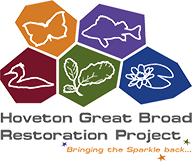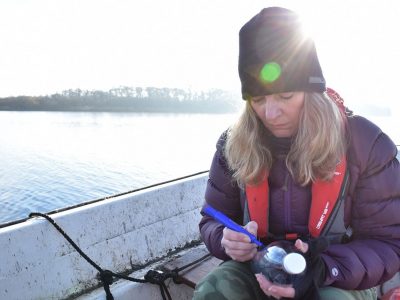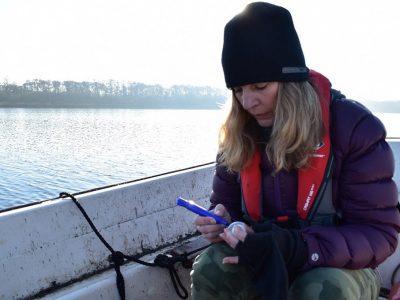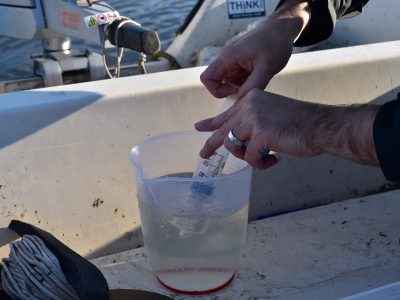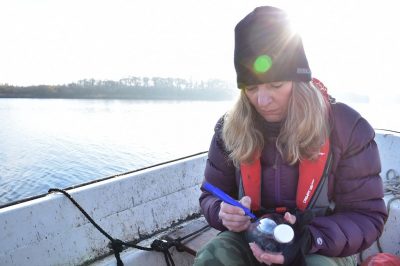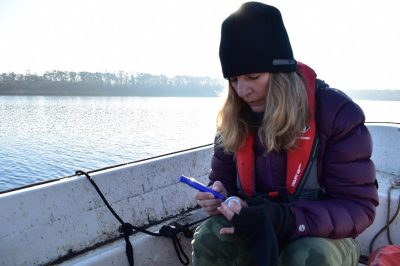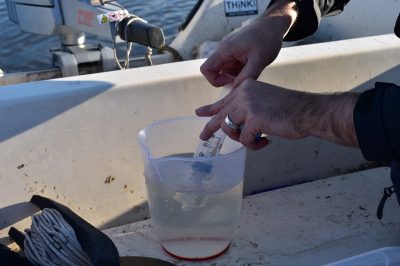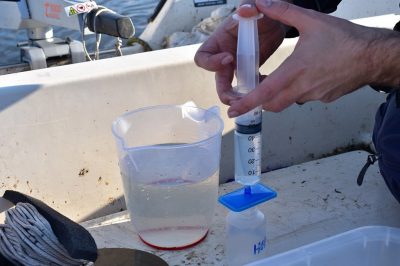Water Sampling Guide
By Shannah McGauran, BSc Biomedicine, University of East Anglia (UEA), 4th January 2019
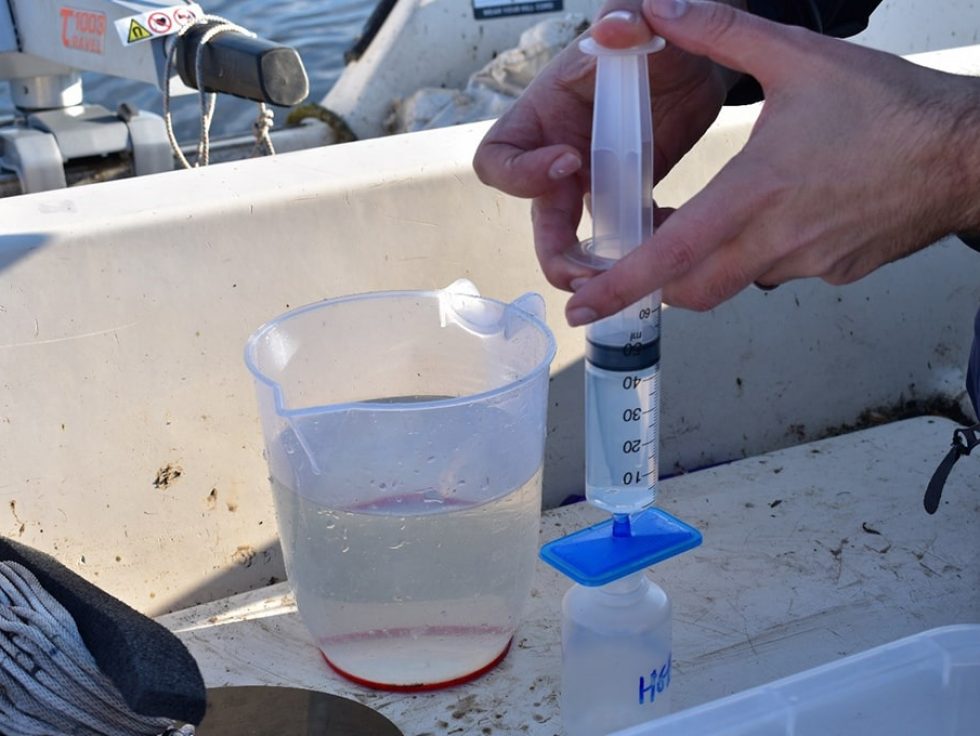
Frequent water sampling allows changes in water quality to be surveyed over time. It provides useful information about environmental parameters including temperature and pH. These can indicate the presence of pollutants which may affect the ecology of the local area.
At Hoveton Great Broad this occurs once a month throughout all seasons, come rain or shine.
You will need:
- Digital compass
- Map with location markers
- Secchi disk
- YSI Water Quality Monitor
- Empty bottles
- Measuring jug
- Sterile syringes
- Sterile filters
- A boat and handy accomplice would also be useful!
- Record sheet for your data

Finding your Location
Using a digital compass, find the precise location of the first area where you will conduct your water sampling. By revisiting the same locations over a prolonged period, you are improving the accuracy of your results. At each location, anchor your boat to the bed of the broad, so you don’t drift away!
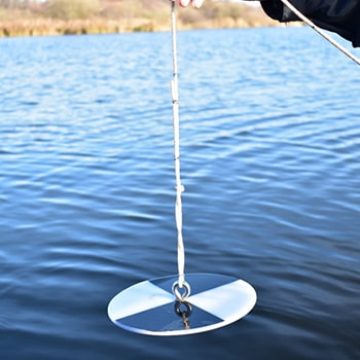
Secchi Disk
The first test uses a piece of equipment called a Secchi disk which measures the turbidity (or cloudiness) of the water. The disk is divided into 4 quarters with alternate sections being coloured black and white. Simply lower the opaque disk into the water until neither the black or white sections can be seen. The disk is tethered to a rope which has markers every 10cm allowing you to record the Secchi depth. The deeper the disk can be lowered and still seen at, the better! When the broads are in good condition, the water should be very clear allowing plenty of light to reach the macrophytes (aquatic plants) on the bed of the broads.
YSI Water Quality Monitor
Next, we used a YSI Water Quality Monitor which measures the temperature, pH, dissolved oxygen and conductivity of the water. This device allows you to probe the water and displays the various readings on screen.
Temperature can affect other environmental parameters such as dissolved oxygen. It is useful to measure water temperature to see if it is changing or stable. Changes in pH can indicate the presence of pollutants or any chemical changes in water. A stable pH is important for aquatic life. Dissolved oxygen is the amount of oxygen available for aquatic life so should not be too low. Finally, conductivity indicates the number of dissolved minerals present in the water and is an especially good measure of salinity. High salinity can affect the surrounding ecology.

Bottled Samples
Bottled samples of water are gathered and sent to a lab to be analysed. We had one green and two clear bottles. Label the three plastic bottles with the location. Dip two bottles, one green and one clear, into the water and secure the lid. Store these in their own container to avoid contamination. The third bottle is a filtered water sample. Taking a jug of water and a sterile syringe-like piece of equipment, slowly take up the water from the jug. Attach a filter to the end of the syringe and eject the water into the third bottle.
These samples will measure various environmental parameters including the amount of chlorophyll, total nitrogen and phosphorous, pesticides, herbicides, metals, etc. These will be tested against regional environmental and safe water standards.
The Hoveton Great Broad Project aims to restore the broad to a crystal clear, pristine state. Through improvements in the water quality, light will be able to reach the various aquatic plants that are the starting point for other species to flourish from and will support the ongoing conservation of fish, insects, aquatic mammals, birds, microorganisms and plants that make the broads as a whole, such a species rich environment.
